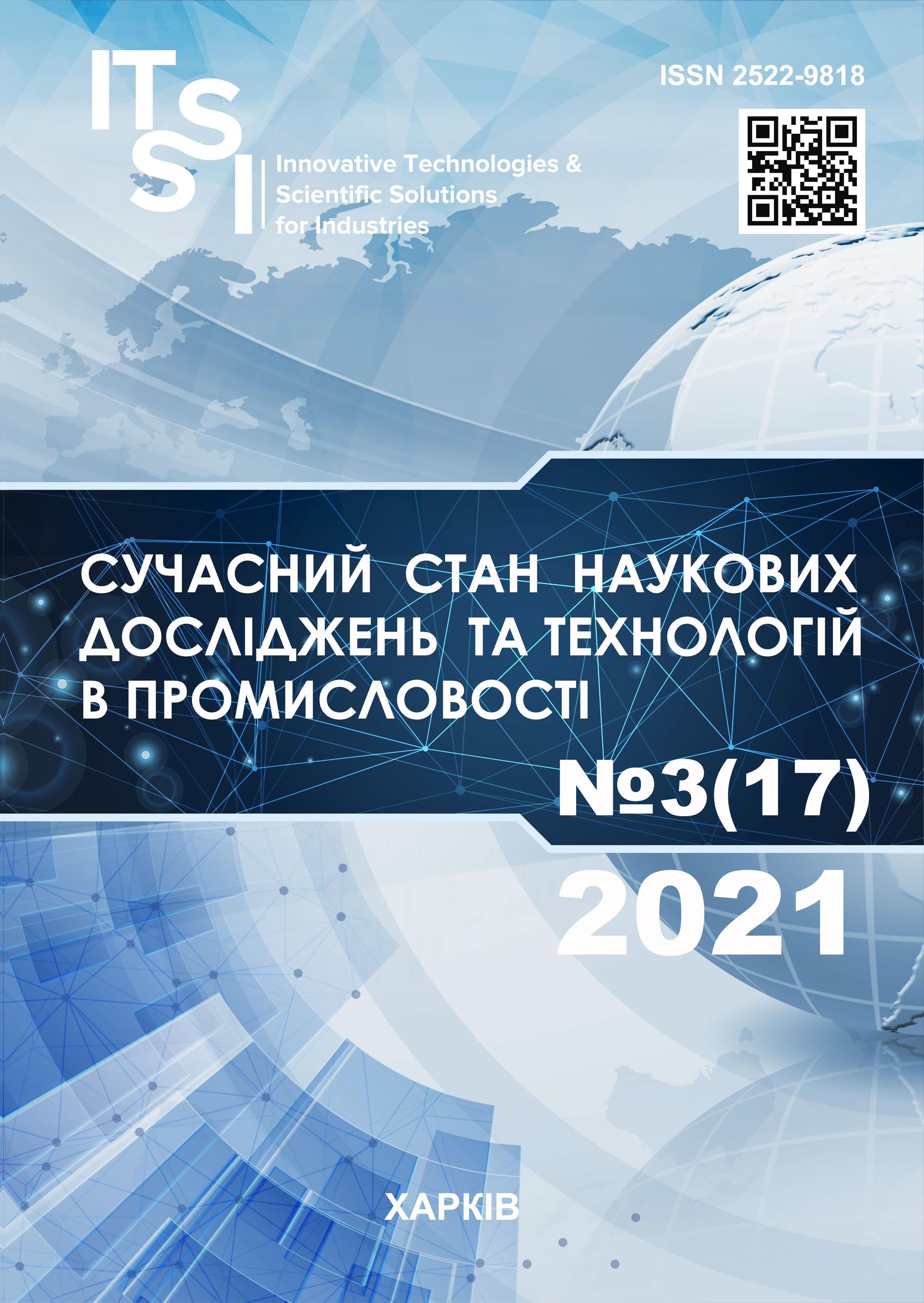SPECIFIC FEATURES OF USING THE FOURTH STAGE OF ACOUSTIC EXPERTISE FOR SPECIAL PURPOSE PREMISES
DOI:
https://doi.org/10.30837/ITSSI.2021.17.041Keywords:
acoustic examination, objective characteristics of the sound field, criteria for evaluating room acousticsAbstract
The subject of the report is the methodology of carrying out an examination of the application for the purpose of establishing the optimal acoustic minds in the prevalence of attribution. The goal is to improve the quality of all stages of acoustic examination, taking into account the premises for which there are special requirements for the quality of the transmitted content or for which there are features in the formation of the sound field. Such a sequence of stages requires the solution of several tasks: determining the conditions for conducting research, taking into account the specifics of the premises and content; selection of hardware and software complex for research; determination of informative criteria for assessing the acoustics of a room, taking into account all its features; processing and analysis of the results obtained. The application of this approach to the stages of acoustic examination was considered on the example of a conference room, for which there were requirements for high quality speech content, a sound reinforcement system was already used in the hall, and there were features in the formation of a sound field. The authors in the article describe the solutions to all the tasks for the investigated room. The results obtained made it possible to analyze the objective characteristics of the sound field and identify the reasons for the low quality of speech content transmission not only in the acoustic calculation, but when using the existing sound reinforcement systems (electroacoustic calculation). Conclusions. The proposed sequence of the stages of acoustic examination makes it possible to identify "problem" places in the formation of the sound field and / or to determine possible solutions even before the stages of checking existing architectural and construction solutions and the development of technical specifications for the construction of enclosing surfaces and measures to create optimal acoustic conditions.
References
Russo, D., Ruggiero, A. (2019), "Choice of the optimal acoustic design of a school classroom and experimental verification", Applied Acoustics, Vol. 146, Р. 280–287. DOI: https://doi.org/10.1016/j.apacoust.2018.11.019
Barteld, N. J., Postma, S. J., Brian, F. G. K. (2018), "Pre-Sabine room acoustic design guidelines based on human voice directivity", The Journal of the Acoustical Society of America, No. 143, Р. 2428–2437.
Shirzhetsky, H. A., Borisov, L. A. (2002), "Acoustics of halls" ["Akustika zal'nykh pomeshcheniy"], The magazine Scene, No. 2, Р. 21.
Anert, V., Stephen, F. (2003), Sound amplification technique. Theory and practice [Tekhnika zvukousileniya. Teoriya i praktika], Ed. OOO PKF Lerusha, 416 p.
ISO 3382:2009 (2009), Acoustics - Measurement of room acoustic parameters. Part 1: Performance spaces.
ISO 3382-3:2012 (2009), Acoustics - Measurement of room acoustic parameters. Part 3: Open plan offices Performance spaces.
ISO 3382-1:2009 (2009), Acoustics - Measurement of room acoustic parameters. Part 1: Per formance spaces.
DBN B.2.2-16-2005 (2005), Buildings and structures. Cultural, entertainment and leisure facilities. State Construction Committee of Ukraine, Kiev.
Ahnert, W., Schmidt, W. (2005), "Fundamentals to perform acoustical measurements", P. 1–49.
Ahnert, W., Schmidt, W. (2005), EASERA, Users Manual, 212 p.
Usik, V. V., Zubchenko, D. S. (2014), "Development of a hardware-software complex for measurement of objective parameters of room acoustics" ["Razrabotka apparatno-programmnogo kompleksa dlya izmereniya ob"ektivnykh parametrov akustiki pomeshcheniya"], Scientific and technical journal "Technology of instrument making", Special issue, P. 36–40.
Usik, V. V, Myagkiy, I. G. (2017), "The use of the first two stages of acoustic examination of auditoriums on the example of a drama theater for 500 seats", Scientific and technical journal "Information and control systems for railway transport", No. 5, P. 26–34.
Poroshin, S. M., Usik, V.V. (2017), "Methods of conducting acoustic examination and architectural and construction solutions for auditoriums on the example of a drama theater for 500 seats" ["Metodika provedeniya akusticheskoy ekspertizy i arkhitekturno-stroitel'nykh resheniy dlya zritel'nykh zalov na primere dramaticheskogo teatra na 500 mest"], Collection of scientific works VI International Radio-Electronic Forum "Applied Radio Electronics. Status and Prospects of Development", P. 125–130.
Poroshin, S. M., Usik, V.V. (2018), "Methodology for assessing the acoustic properties of auditorium rooms" ["Metodologiya otsenki akusticheskikh svoystv pomeshcheniy zritel'skikh zalov"], World Science, No. 1 (29), Vol. 1, P. 8–15.
Usik, V. V. (2018), "The hardware-software complex for measuring sound field characteristics in a room at the final stage of the acoustic examination", Metrology and metrology assurance 2018. Procttdings of the 28 International scirntific symposium. Sozopol, Р. 233–236.
Poroshin, S., Usik, V., Butova, O. (2019), "Features of the application of the methodology for assessing the acoustic properties of the sound field for spectator rooms", XXIX International Scientific Symposium Metrology and Metrology Assurance 2019 (MMA 2019) Sozopol, P. 145–149. DOI: https://doi.org/10.1109/MMA.2019.8936027
Downloads
Published
How to Cite
Issue
Section
License

This work is licensed under a Creative Commons Attribution-NonCommercial-ShareAlike 4.0 International License.
Our journal abides by the Creative Commons copyright rights and permissions for open access journals.
Authors who publish with this journal agree to the following terms:
Authors hold the copyright without restrictions and grant the journal right of first publication with the work simultaneously licensed under a Creative Commons Attribution-NonCommercial-ShareAlike 4.0 International License (CC BY-NC-SA 4.0) that allows others to share the work with an acknowledgment of the work's authorship and initial publication in this journal.
Authors are able to enter into separate, additional contractual arrangements for the non-commercial and non-exclusive distribution of the journal's published version of the work (e.g., post it to an institutional repository or publish it in a book), with an acknowledgment of its initial publication in this journal.
Authors are permitted and encouraged to post their published work online (e.g., in institutional repositories or on their website) as it can lead to productive exchanges, as well as earlier and greater citation of published work.














